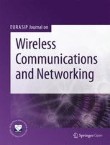In recent years, supervised machine learning methods (e.g. k nearest neighbors, Bayes' theorem, decision tree, support vector machine, random forest, neural network, convolutional neural network, recurrent neural network, long short-term memory network, gated recurrent unit network), unsupervised machine learning methods (e.g. association rules, k-means, density-based spatial clustering of applications with noise, hierarchical clustering, deep belief networks, deep Boltzmann machine, auto-encoder, de-noising auto-encoder, etc.), reinforcement learning methods (e.g. generative adversarial network, deep Q network, trust region policy optimization, etc.) and federated learning methods have been applied to trust, security and privacy in computing and communications. For instance, machine learning methods have been used to analyze the behaviors of the data stream in networks and extract the patterns of malicious activities (packet dropping, worm propagation, jammer attacks, etc.) for generating rules in intrusion detection systems. Furthermore, time-series methods (e.g. local outlier factor, cumulative sum, adaptive online thresholding, etc.) have been proposed to retrieve the time-series features of anomalous behaviors for preventing cyber-attacks and malfunctions.
While the area of machine learning methods for trust, security and privacy in computing and communications is a rapidly expanding field of scientific research, several open research questions are still needed to be discussed and studied. For instance, using and improving machine learning methods for malicious activity detection, attack detection, mobile endpoint analyses, repetitive security task automation, zero-day vulnerability prevention and other security applications are the important issues in computing and communications. This special issue named “Machine Learning for Trust, Security and Privacy in Computing and Communications” in EURASIP Journal on Wireless Communications and Networking will solicit papers on the following topics across various disciplines of trust, security and privacy in computing and communications.
Topics include, but are not limited to, the following:
- New supervised machine learning methods for trust, security and privacy in computing and communications
- New unsupervised machine learning methods for trust, security and privacy in computing and communications
- New reinforcement learning methods for trust, security and privacy in computing and communications
- New federated learning methods for trust, security and privacy in computing and communications
- New optimization methods for trust, security and privacy in computing and communications
Manuscript Deadline: June 30, 2022
Lead Guest Editor
Chin-Ling Chen, Chaoyang University of Technology, Taiwan
Guest Editors
Haishuai Wang, Fairfield University & Harvard University, USA
Chi-Hua Chen, Fuzhou University, China
Chunjia Han, Greenwich University, UK
Yu-Chih Wei, National Taipei University of Technology, Taiwan
Xiaoyan Li, Fuzhou University, China
Submission Guidelines:
Authors should prepare their manuscript according to the guide for authors available from the online submission page of the EURASIP Journal on Wireless Communications and Networking at https://jwcn-eurasipjournals.springeropen.com/. Authors should select "Machine Learning for Trust, Security and Privacy in Computing and Communications" in the submission process. Submitted papers must contain original work, which has neither been previously published nor it is currently under review by another journal or conference. Previously published or accepted conference papers must contain at least 50% new material to be considered for the special issue. All papers will be peer-reviewed by at least two independent reviewers. Requests for additional information should be addressed to the corresponding guest editor. Submissions will also benefit from the usual advantages of open access publication:Rapid publication: Online submission, electronic peer review and production make the process of publishing your article simple and efficient, High visibility and international readership in your field: Open access publication ensures high visibility and maximum exposure for your work - anyone with online access can read your article, No space constraints: Publishing online means unlimited space for figures, extensive data and video footage, Authors retain copyright, licensing the article under a Creative Commons license: articles can be freely redistributed and reused as long as the article is correctly attributed. For editorial inquiries please contact vincent.salvo@springer.com. Sign up for article alerts to keep updated on articles published in EURASIP Journal on Wireless Communications and Networking - including articles published in this special issue!
